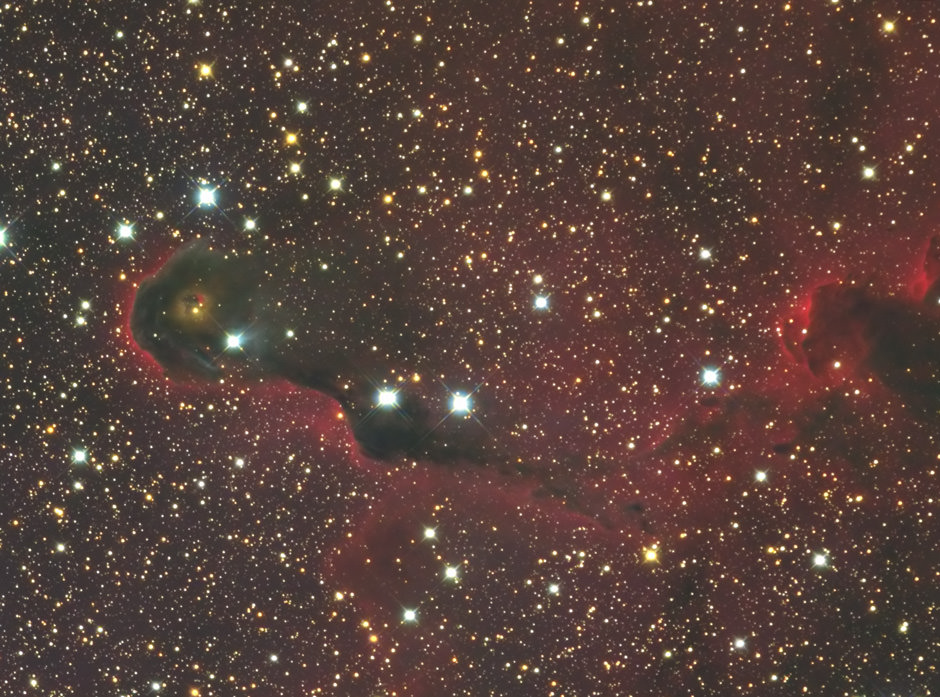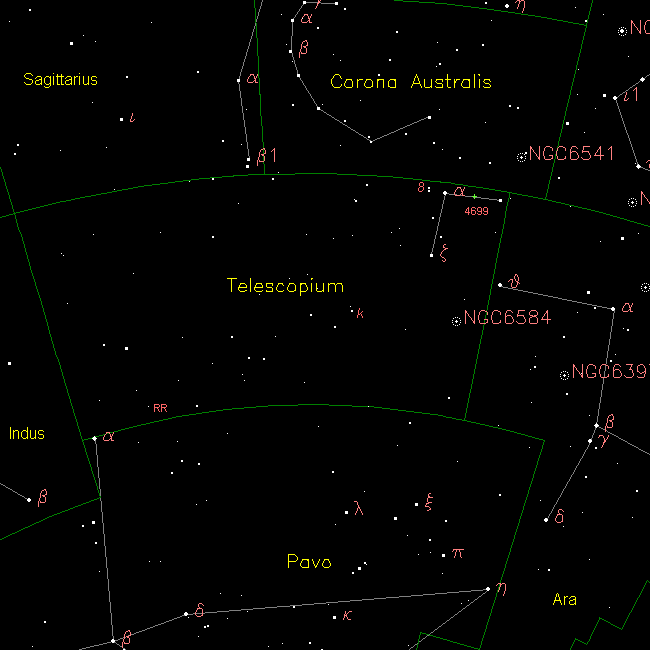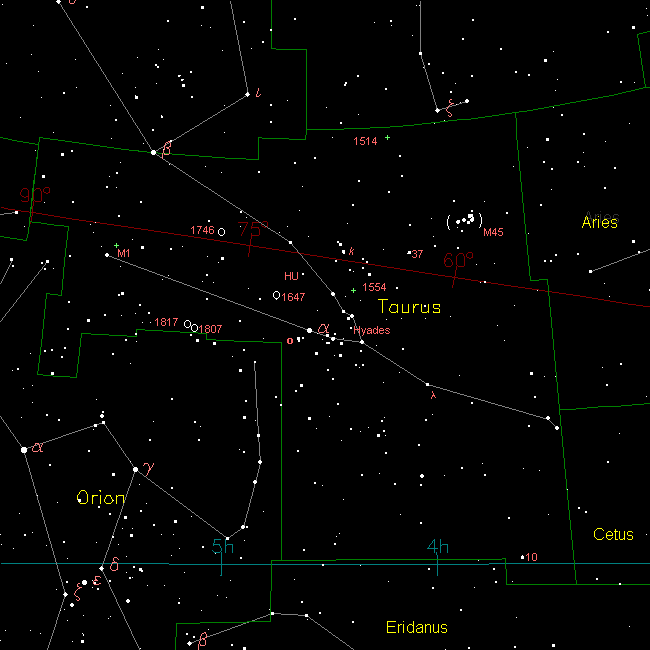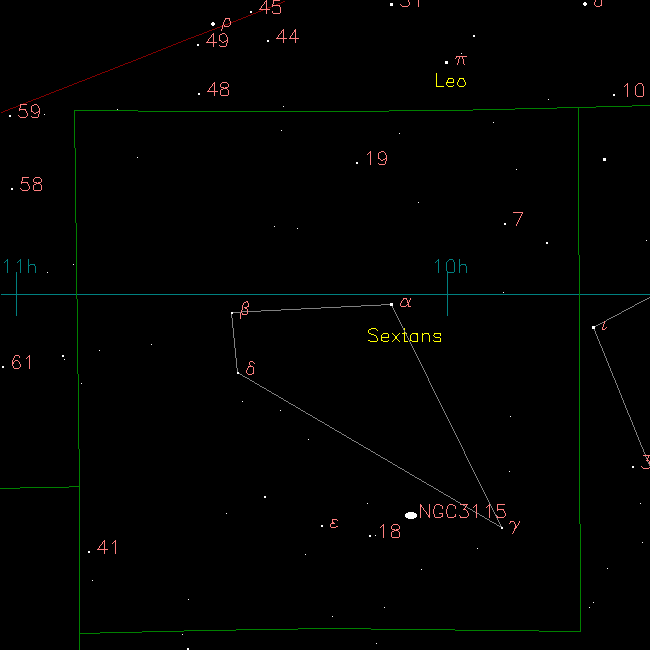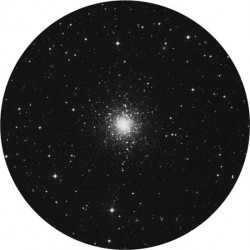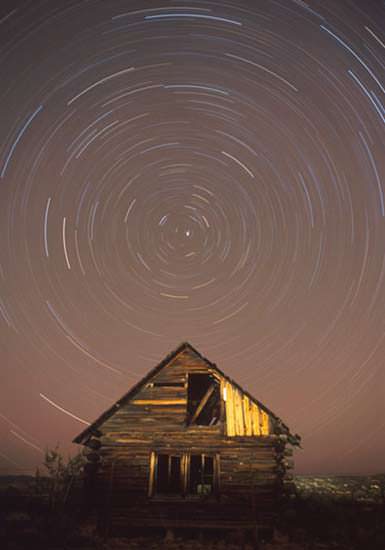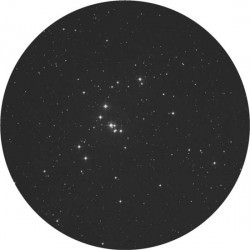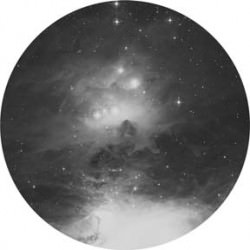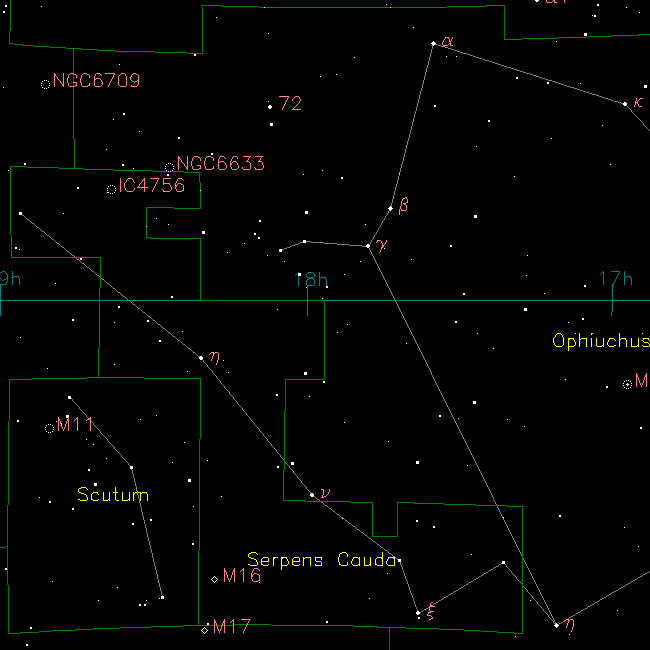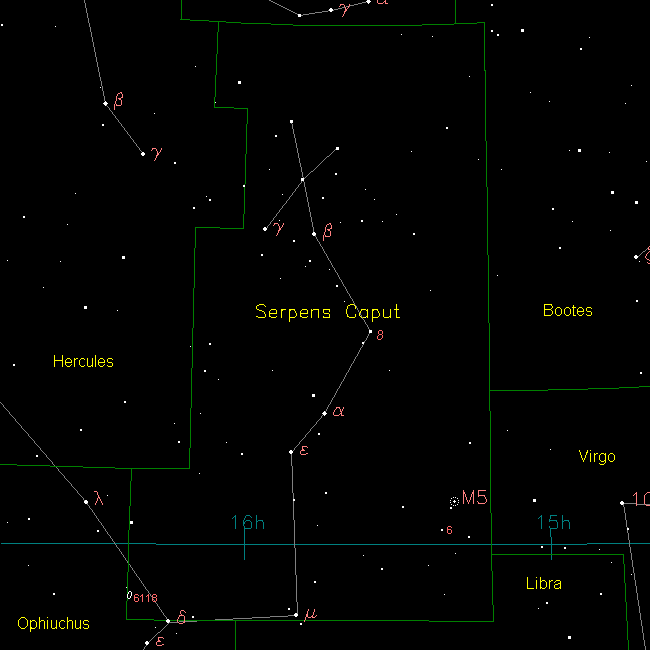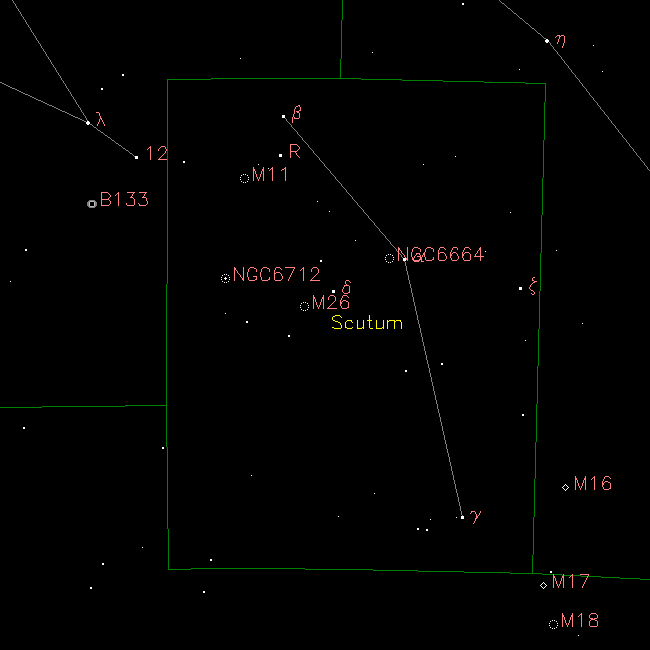[/caption]
The ancient zodiacal constellation of Taurus was one of Ptolemy’s original 48 constellations and remains today as part of the official 88 modern constellations recognized by the IAU. It is perhaps one of the oldest constellations of all and may have even been recognized prehistorically. Taurus spreads over 797 square degrees of sky and contains 7 main stars in its asterism with 130 Bayer Flamsteed designated stars located within its confines. It is bordered by the constellations of Auriga, Perseus, Aries, Cetus, Eridanus, Orion and Gemini. Taurus is visible to all observers located at latitudes between +90° and ?65° and is best seen at culmination during the month of January.
There is one major annual meteor shower associated with the constellation of Taurus, the annual Taurids, which peak on or about November 5 of each year and have a duration period of about 45 days. The maximum fall rate for this meteor shower is about 10 meteors per hour average, with many bright fireballs often occuring when the parent comet – Encke – has passed near perihelion. Look for the radiant, or point of origin, to be near the Pleiades.
Taurus is considered by some to be one of the oldest recognized constellations known, and may have even been depicted with the Pleiades in cave paints dating back to 13,000 BC. According to Greek myth, Taurus was the god Zeus, transformed into a bull in order to woo princess Europa, and perhaps could represent one of the Cretean Bull of Herculean fame. The ancient Egyptians also worshiped a bull-god for which this constellation might represent, just as the Arabs also considered it to be bovine by nature. The Hyades cluster was meant to represent the sisters of Hyas, a great hunter, placed in the sky to honor their mourning for the loss of their brother – just as the Pleiades represent the seven sisters of Greek mythology – as well as many other things in many other cultural beliefs. The Persians called this group of stars “Taura”, just as the Arabs referred to it as “Al Thaur”. No matter what way you want to look at it, this handsome collection of stars contains many fine deep sky objects to pique your interest!
Let’s begin our binocular and telescope tour of Taurus with its brightest star- Alpha – the “a” symbol on our map. Known to the Arabs as Al Dabaran, or “the Follower,” Alpha Tauri got its name because it appears to follow the Pleiades across the sky. In Latin it was called Stella Dominatrix, yet the Olde English knew it as Oculus Tauri, or very literally the “eye of Taurus.” No matter which source of ancient astronomical lore we explore, there are references to Aldebaran.
As the 13th brightest star in the sky, it almost appears from Earth to be a member of the V-shaped Hyades star cluster, but this association is merely coincidental, since it is about twice as close to us as the cluster is. In reality, Aldebaran is on the small end as far as K5 stars go, and like many other orange giants, it could possibly be a variable. Aldebaran is also known to have five close companions, but they are faint and very difficult to observe with backyard equipment. At a distance of approximately 68 light-years, Alpha is “only” about 40 times larger than our own Sun and approximately 125 times brighter. To try to grasp such a size, think of it as being about the same size as Earth’s orbit! Because of its position along the ecliptic, Aldebaran is one of the very few stars of first magnitude that can be occulted by the Moon.
Now, head off to Beta Tauri – the “B” symbol on our chart. Located 131 light years from our solar system, El Nath, or Gamma Aurigae, is a main sequence star about to evolve into a peculiar giant star – one high in manganese content, but low in calcium and magnesium. While you won’t find anything else spectacular about El Nath, there is a good reason to remember its position – it, too, get frequently occulted by the Moon. Such occultations occur when the moon’s ascending node is near the vernal equinox. Most occultations are visible only in parts of the Southern Hemisphere, because the star lies at the northern edge of the lunar occultation zone and occasionally it may be occulted as far north as southern California.
Now, turn your binoculars or small telescopes towards Omicron – the “o”. Omicron is sometimes called Atirsagne, meaning the “Verdant One”, but there’s nothing green about this 212 light year distant yellow G-type giant star, only that it has a great optical companion! Be sure to take a look at Kappa Tau, too… the “k”. Kappa is also a visual double star – but a whole lot more. Located 153 light years from Earth, this Hyades cluster member is dominated by white A-type subgiant star K1 and white A-type main sequence dwarf star, K2. They are 5.8 arcminutes, or at least a quarter light year apart. Between the two bright stars is a binary star made up of two 9th magnitude stars, Kappa Tauri C and Kappa Tauri D, which are 5.3 arcseconds from each other and 183 arcseconds from K1 Tau. Two more 12th magnitude companions fill out the star system, Kappa Tauri E, which is 136 arcseconds from K1 Tau, and Kappa Tauri F, 340 arcseconds away from K2 Tau. Still more? Then have a look at 37 Tauri, an orange giant star with a faint optical companion star… or 10 Tauri! 10 Tauri is only 45 light years away, and while it just slightly larger and brighter than our Sun, its almost the same age. It is believed to be a spectroscopic binary star, but you’ll easily see it’s optical companion. What’s more, thanks to noticing a huge amount of infrared radiation being produced by 10, we know it also has a dusty debris disk surrounding it!
Now, let’s have a go at variable stars – starting with Lambda, the upside down “Y” on our map. Al Thaur is in reality a binary star system as well as being an eclipsing variable star. The primary is a blue-white B-type main sequence dwarf star located about 370 light years away. However, located at a distance of 0.1 AU away from it is a white A-type subgiant star, too… and a third player even further away. Watch over a period of 3.95 days as first one, then the other passes in front of the primary star, dimming it by almost a full stellar magnitude! Don’t forget to check out HU Tauri, too. It is also an eclipsing binary star that drops by a magnitude every 2.6 days!
Ready to take a look at Messier 45? Visible to the unaided eye, small binoculars and every telescope, the Pleiades bright components will resolve easily to any instrument and is simply stunning. The recognition of the Pleiades dates back to antiquity and they’re known by many names in many cultures. The Greeks and Romans referred to them as the “Starry Seven,” the “Net of Stars,” “The Seven Virgins,” “The Daughters of Pleione” and even “The Children of Atlas.” The Egyptians referred to them as “The Stars of Athyr,” the Germans as “Siebengestiren” (the Seven Stars), the Russians as “Baba” after Baba Yaga, the witch who flew through the skies on her fiery broom. The Japanese call them “Subaru,” Norsemen saw them as packs of dogs and the Tongans as “Matarii” (the Little Eyes). American Indians viewed the Pleiades as seven maidens placed high upon a tower to protect them from the claws of giant bears, and even Tolkien immortalized the stargroup in The Hobbit as “Remmirath.” The Pleiades have even been mentioned in the Bible! So, you see, no matter where we look in our “starry” history, this cluster of seven bright stars has been part of it.
The date of the Pleiades culmination (its highest point in the sky) has been celebrated through its rich history by being marked with various festivals and ancient rites — but there is one particular rite that really fits this occasion! What could be spookier on this date than to imagine a bunch of Druids celebrating the Pleiades’ midnight “high” with Black Sabbath? This night of “unholy revelry” is still observed in the modern world as “All Hallows Eve” or more commonly as “Halloween.” Although the actual date of the Pleiades’ midnight culmination is now on November 21 instead of October 31. Thanks to its nebulous regions M45 looks wonderfully like a “ghost” haunting the starry skies. Binoculars give an incredible view of the entire region, revealing far more stars than are visible with the naked eye. Small telescopes at lowest power will enjoy M45’s rich, icy-blue stars and fog-like nebulae. Larger telescopes and higher power reveal many pairs of double stars buried within its silver folds. No matter what you chose, the Pleiades definitely rocks!
Our next most famous Messier catalog object in Taurus is M1 – the “Crab Nebula”. Although M1 was discovered by John Bevis in 1731, it became the first object on Charles Messier’s astronomical list. He rediscovered M1 while searching for the expected return of Halley’s Comet in late August 1758 and these “comet confusions” prompted Messier to start cataloging. It wasn’t until Lord Rosse gathered enough light from M1 in the mid-1840’s that the faint filamentary structure was noted (although he may not have given the Crab Nebula its name). To have a look for yourself, locate Zeta Tauri and look about a finger-width northwest. You won’t see the “Crab legs” in small scopes – but there’s much more to learn about this famous “supernova remnant”.
Factually, we know the “Crab Nebula” to be the remains of an exploded star recorded by the Chinese in 1054. We know it to be a rapid expanding cloud of gas moving outward at a rate of 1,000 km per second, just as we understand there is a pulsar in the center. We also know it as first recorded by John Bevis in 1758, and then later cataloged as the beginning Messier object – penned by Charles himself some 27 years later to avoid confusion while searching for comets. We see it revealed beautifully in timed exposure photographs, its glory captured forever through the eye of the camera — but have you ever really taken the time to truly study the M1? Then you just may surprise yourself… In a small telescope, the “Crab Nebula” might seem to be a disappointment – but do not just glance at it and move on. There is a very strange quality to the light which reaches your eye, even though at first it may just appear as a vague, misty patch. To small aperture and well-adjusted eyes, the M1 will appear to have “living” qualities – a sense of movement in something that should be motionless. This aroused my curiosity to study and by using a 12.5″ scope, the reasons become very clear to me as the full dimensions of the M1 “came to light”.
The “Crab” Nebula holds true to so many other spectroscopic studies I have enjoyed over the years. The concept of differing light waves crossing over one another and canceling each other out – with each trough and crest revealing differing details to the eye – is never more apparent than during study. To truly watch the M1 is to at one moment see a “cloud” of nebulosity, the next a broad ribbon or filament, and at another a dark patch. When skies are perfectly stable you may see an embedded star, and it is possible to see six such stars. It is sometimes difficult to “see” what others understand through experience, but it can be explained. It is more than just the pulsar at its center teasing the eye, it is the “living” quality of which I speak -TRUE astronomy in action. There is so much information being fed into the brain by the eye!
I believe we are all born with the ability to see spectral qualities, but they just go undeveloped. From ionization to polarization – our eye and brain are capable of seeing to the edge of infra-red and ultra-violet. How about magnetism? We can interpret magnetism visually – one only has to view the “Wilson Effect” in solar studies to understand. What of the spinning neutron star at its heart? We’ve known since 1969 the M1 produces a “visual” pulsar effect! We are now aware that about once every five minutes, changes occurring in the neutron star’s pulsation effect the amount of polarization, causing the light waves to sweep around like a giant “cosmic lighthouse” and flash across our eyes. For now, l’ll get down of my “physics” soapbox and just let it suffice to say that the M1 is much, much more than just another Messier. Capture it tonight!!
Since we’ve studied the “death” of a star, why not take the time tonight to discover the “birth” of one? Get out your telescope! Our journey will start by identifying Aldeberan (Alpha Tauri) and moving northwest to bright Epsilon. Hop 1.8 degrees west and slightly to the north for an incredibly unusual variable star – T Tauri. Discovered by J.R. Hind in October 1852, T Tauri and its accompanying nebula, NGC 1554/55 set the stage for discovery with a pre-main sequence variable star. Hind reported the nebula, but also noted that no catalog listed such an object in that position. His observance also included a 10th magnitude uncharted star and he surmised that the star in question was a variable. On either account, Hind was right and both were followed by astronomers for several years until they began to fade in 1861. By 1868, neither could be seen and it wasn’t until 1890 that the pair was re-discovered by E.E. Barnard and S.W. Burnham. Five years later? They vanished again.
T Tauri is the prototype of this particular class of variable stars and is itself totally unpredictable. In a period as short as a few weeks, it might move from magnitude 9 to 13 and other times remain constant for months on end. It is about average to our own Sun in temperature and mass – and its spectral signature is very similar to Sol’s chromosphere – but the resemblance ends there. T Tauri is a star in the initial stages of birth! So what exactly are T Tauri stars? They may be very similar in ways to our own Sun but they are far more luminous and rotate much faster. For the most part, they are located near molecular clouds and produce massive outflows of this material in accretion as evidenced by the variable nebula, NGC 1554/55. Like Sol, they produce X-ray emissions, but a thousand times more strong! We know they are young because of the spectra – high in lithium – which is not present at low core temperatures. T Tauri has not reached the point yet where proton to proton fusion is possible! Perhaps in a few million years T Tauri will ignite in nuclear fusion and the accretion disk become a solar system. And just think! We’re lucky enough to see them both…
For a large telescope challenge, let’s try NGC 1514 (RA 4 : 09.2 +30 : 47). This magnitude 10 planetary nebula is fairly small and dim… and it was discovered by William Herschel on November 13, 1790. If he could do it over 300 years ago, so can you! Chances are this particular nebula is a gaseous envelope which surrounds a tight double star, but revealing it was what startled Herschel the most. In his reports he writes: “A most singular phenomena… surrounded with a faintly luminous atmosphere… judgement I may venture to say, will be, that the nebulosity about the star is not of a starry nature”.
Planetary nebulae were first described as “planetary” by William Herschel in 1785. Before then, all were simply considered “nebulae.” It was once thought they were made of stars, but today we know planetaries are created from material given off by a single star. Many show well-defined rings of one type or another. Others – like M1 – are irregularly shaped supernova remnants. NGC 1514’s material is slowly boiled off over time, rather than caused by a violent explosion. It would be very hard to find the neutron central star in M1, but almost any scope can make out NGC 1514’s 10th magnitude fueling star as it quietly cooks away gases to feed its nebulous shroud. Because it is so bright, it can easily overwhelm the eye. This makes NGC 1514 similar to the famous “Blinking Planetary” – NGC 6826 – in Cygnus.
Are you ready for some galactic star clusters? Then let’s head for NGC 1647 (RA 4 : 46.0 Dec +19 : 04). At nearly unaided eye visibility and large enough to be easily seen in small binoculars and telescope, this widely scattered star cluster contains several dozen well resolved members and lots of double stars. The brighter stars are A or B-type main sequence stars, however there are also a few colorful orange giants to delight the eye, and the two brightest are located on the southern edge of the cluster.
Another bright, big and beautiful open star cluster for all optics is NGC 1746 (RA 5 : 03.6 Dec +23 : 49). It contains about two dozen members and although its not very compressed to the telescope, makes a very nice showing in binoculars or a rich field telescope. What’s clever about this particular cluster, is there is also two other open clusters which are superimposed on top! Look for NGC 1750 and NGC 1758 as part of this region as well. While it was debated for many years that Sir William Herschel was crazy when he designated three separate clusters for this region, later science proved him right!
How about another pair of open star clusters? Then have a look at NGC 1817 (RA 5 : 12.1 Dec +16 : 42) and NGC 1807 (RA 5 : 10.7 Dec +16 : 32). Both can be squeezed in the same field in binoculars and resolved very well to the telescope. Found a little less than a hand span northwest of Betelguese, NGC 1807 and NGC 1817 aren’t exactly twins. Both clusters are of similar magnitude and can be seen as faint patches in binoculars. Through a telescope, NGC 1817 appears far more populated with stars than its neighbor. Studies based on stellar motion reveal that NGC 1817 has far more stars than the brighter NGC 1807. Although the two are quite distant from one another in space, we get to see them both as close friends…
Sources:
Chandra Observatory
SEDS
Wikipedia
Chart Courtesy of Your Sky.

